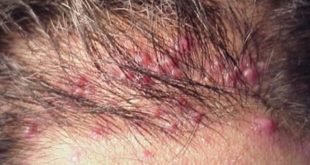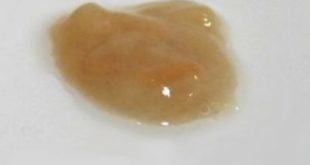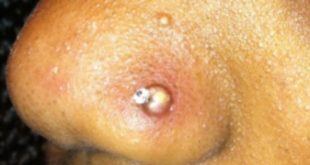Red spots on breasts can present as itchy or non-itchy dots on the breast area. You can get these when breastfeeding and or just about any time. What does it mean to have red bumps with no pain? Here are the causes and how to get rid of red spots, blotches and patches on your breast.
Breasts are more prone to skin disorders, this could cause red spots on breasts mainly due to their large size, daily exposure to irritation from clothing and undergarments, as well as temporary structural changes occasioned by hormonal influences.
Normally, skin rashes are skin abnormalities that come with dry, scaly, itchy, and red skin. There are also times when itchy breasts could take place on their own, and will often come with no rash; this should be considered separately from red dots on breasts.
Red bumps on breasts are broadly classified as:
- Rash on top of breast
- Rash under breast
- Rash above breast
- Rash near nipple.
The difference in the location of the red dots is occasioned by the causes of the redness.
Symptoms of Red Bumps on Breasts
Contents
The symptoms of red dots on breasts could start suddenly, and may often include the following:
- Abnormal swelling, which could lead to a single breast being larger than the rest
- Tenderness of the breast
- Burning or pain when you are breastfeeding
- A painful lump in the breast
- Chills
- Itching
- Warm breasts
- Discharge from the nipples, which comes with pus
- Redness of the skin appearing in the form of a wedge-shaped pattern
- Enlarged lymph nodes in the neck or armpits region
- Rundown or feeling extremely ill
It is normal to experience flu-like symptoms before you start noticing any changes that may be taking place in the breasts. If you were to notice a combination of any of the above symptoms, it is highly recommended that you contact a GP.
Causes of Red Spots on Breast Skin
As is common with all other types of skin problems, excessive skin dryness is often mistaken for being a disorder.
Skin dryness is referred to as Xerosis and is mainly caused by:
- Dry climates
- Itching
- Harsh soaps
- Age-related skin changes
- Dry climates
It is something that could lead to scaling and itching of the tender breast skin, and this not only increases your chances of getting an infection, but it can also lead to red spots on breasts.
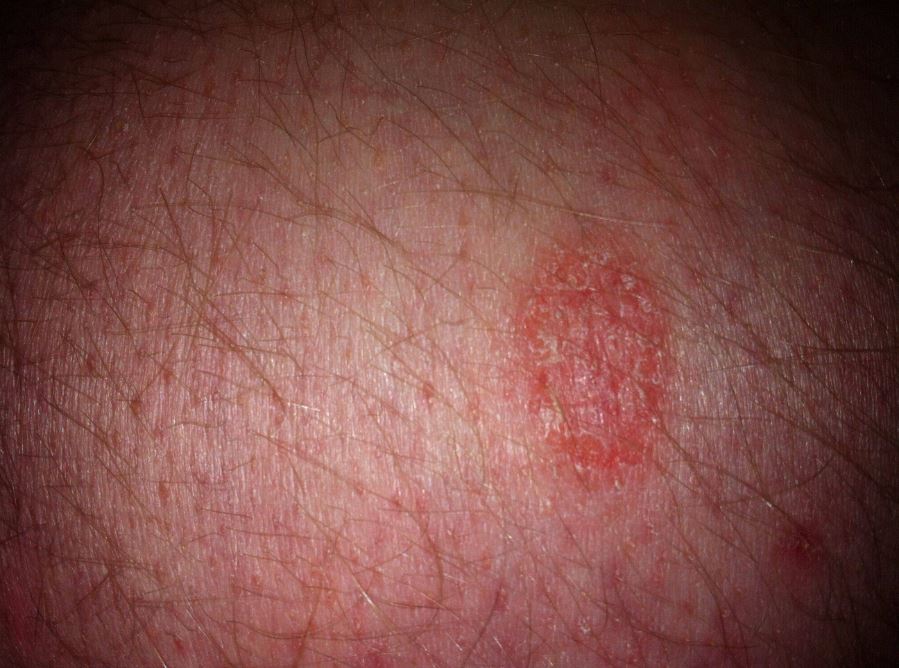
Additional causes of red dots on breasts include:
1. Atopic Dermatitis
Atopic dermatitis is also referred to as eczema in some medical circles, and will often arise due to the presence of allergic factors.
It is common in people who have a long history of allergies, since the time they were young, and may become worse when a woman is pregnant.
2. Contact Dermatitis
It is an inflammation, and irritation of the skin brought about by exposure to substances such as lotions, creams, soaps, and certain types of fabrics that are found in clothing and undergarments.
It arises when these substances are exposed to your breasts or detergents as the undergarments are being washed.
3. Submammary Candidiasis
This is a breast fungus, which has been known to attack the outer layer of the skin found in the breast, thereby leading to red spots on breast.
The fungus is mainly caused by a species of the yeast family known as Candida, and which has been known to arise under a woman’s breasts, within the continuous skin folds that are located within her chest.
In many cases, it begins with chaffing, below the breast, and this is something that can be attributed to wearing bras, that are tight fitting, especially with big-breasted women.
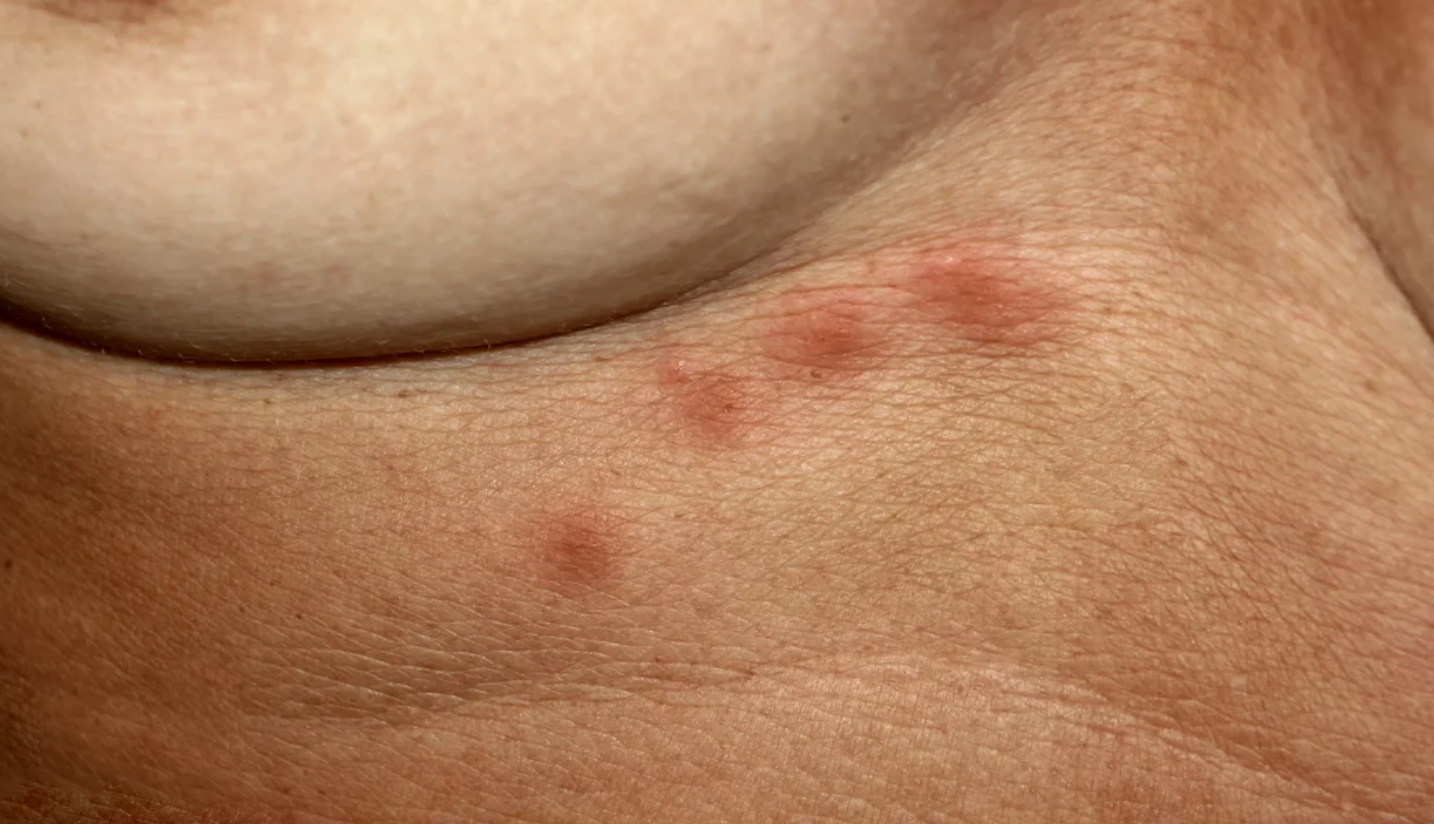
4. Hives
Hives are an immune reaction that causes lines or patches of raised red spots, which also happen to be very itchy.
In some cases, hives could cause swelling of the area that is affected. Although the exact cause is known, hives have often been linked to allergies.
5. Breast Abscess
Breast abscess are a collection of pus within the tissues found in a woman’s breast, which makes the outer skin layer of the breasts appear as though they are red, raised, and will be warm to your touch.
In many cases, the condition is very painful, and even when there is no pain, you can expect to experience some tenderness every time you press over this abscess.
6. Mastitis
Mastitis is an infection of breast tissue and is often found in women who are breastfeeding. The breasts of such a woman will appear to be swollen, will have red bumps, and will also be hot to the touch, apart from being painful.
In most cases, the swelling in mastitis is more generalized, as opposed to the localized bump found in the abscess.
7. Changes During and After Pregnancy
When a woman is pregnant, the breasts go through a lot of changes. The Montgomery, oil-producing glands located in the areola are likely to become bigger, due to the hormonal changes that are taking place.
This will, in turn, make the tissues appear as red bumps over your breast, which is quite normal.
As you breastfeed, you are at a higher risk of getting mastitis. The bacteria found in the mouth of your child could end up infecting the milk ducts.
When this happens, swelling is likely to occur, followed by red bumps on breasts, as well as fever, and the occasional pain.
In some cases, there may be formation of pockets of infection or an abscess. You may need to take some antibiotics in a bid to get rid of these infections.
8. Cysts, Lumps and Glands
It is common for cysts to begin forming in your breast tissue. During the course of your menstrual cycle, there is a possibility that these cysts will start changing in size.
If they are located very close to the skin surface, they may begin to stretch, and this may lead to the appearance of red spots on breast.

There is also a possibility that your glands may become enlarged as well, especially when they become clogged with all types of debris. Whenever you feel a bump over your breast, it is recommended that you contact the nearest GP.
Additional Causes:
According to Mayo Clinic, most breast rashes often have the same causes as rashes that are occurring in other areas of the body. However, some rashes will only occur in the breasts.
Additional causes of red spots on breast include:
- Inflammatory breast cancer
- Mammary duct ectasia
- Nipple dermatitis
- Tattooing
- Radiation dermatitis
Having looked at what causes the red dots on breast, we should now take a look at how you can manage this at home, with the readily available ingredients.
Home Remedies for Red Spots on Breast:
1. Cold Compress
Cold compresses have been known to relieve most of the symptoms that are associated with red bumps on breasts, such as burning or itching sensations below the breasts.
Directions
- Use a thin cotton towel to wrap some ice and place it on the affected breast area for between five and ten minutes
- Once the ten minutes are over, take a small break before repeating the exercise
- You could also choose to apply a cold compress combined with skin milk in equal parts.
- It is an option that will help in reducing swelling and relieving itchiness
- Alternatively, you could try bathing with cold water. The cold water will help in closing the skin pores, and in the process eliminate sweating, as well as the appearance of the red dots.
2. Cotton
A great way to deal with the red spots is to ensure that you reduce the accumulation of sweat in the area surrounding the breast
Directions
- Take a thin piece of cotton and place it in the area bordering your lower breasts, as well as the skin to create a barrier between the two, as well as absorb all the excess moisture
- If thin cotton pieces are not available, you can substitute them with dinner napkins, or soft paper towels
- Alternatively, you may choose to wear clothing that is light, and made from cotton, as it will help absorb the moisture present, therefore ensuring that your body is free from sweat
3. Vinegar
In some cases, the chemical residue that is found in your clothing can lead to the emergence of red bump. However, the good news is that vinegar is useful in helping resolve such issues.
Directions
- Prepare a half bucket of water, and blend it with a single cup of white vinegar
- You will need to use this vinegar solution when you are washing your bras
- Ensure that the bras are dried in direct sunlight
- Alternatively, consider applying apple cider vinegar on the breast area that has become irritated.
- You will need to wash this entire area using mild soapy water, and then rinse it with some cold water before you can pat it dry.
- Blend a single teaspoon of apple cider vinegar with a single cup of water, and then apply this apple cider vinegar solution to the breast area that is affected.
- Ensure you repeat the process at least three times
4. Cornstarch
Cornstarch is a home remedy that is highly effective when it comes to alleviating burning or itching sensations, which are often associated with red spots on breast.
The cornstarch will be vital in ensuring that your skin remains dry at all times.
Directions
- Use soap and water to clean the breast area that has been affected, before proceeding to pat the area dry using a towel
- Once you are sure that the breast area is dry, proceed to apply cornstarch over the area
- It is recommended that you repeat this at least two times each day
It is significant to note that cornstarch should never be applied on skin that is moist or wet, as it may increase the chances of getting a fungal infection.
5. Coconut Oil
Coconut oil contains a healing and soothing effect, which has been known to help in providing relief from the symptoms associated with the red dots.
Given that it has a very greasy nature, it also helps in reducing friction, which may lead to red bumps occurring under your breasts. Thanks to its antifungal properties, coconut oil also helps in dealing with infections.
Directions
- Scoop a generous amount of coconut oil and gently apply it to the skin area that is affected.
- You should provide it with enough time for it to get absorbed into your skin
- Ensure you repeat application for three times each day until the spots disappear
6. Calamine Lotion
Calamine lotion contains properties, which make it ideal for use in providing relief from itching, while at the same time helping speed up your healing process.
The lotion will also ensure that the affected breast area remains dry at all times, and thus helps ensure that an infection will not take place
Directions
- Use lukewarm water and mild soap to properly clean the skin area that is affected by the red spots
- Once the breast area is clean, you will need to use a dry towel to pat it dry
- The calamine lotion should be applied using a cotton ball
- For as long as the spots are still present in the breast area, it will be important to ensure that you continue with application
7. Tea Tree Oil
It is an essential oil that comes with antifungal properties, which are vital in treating bumps on breast.
The properties are also ideal when it comes to dealing with infections and fungus
Directions
- You will need to blend six drops of tea tree oil with at least four drops of olive oil
- Take a cotton ball and dip it into your mixture
- Use the cotton ball to gently massage the affected breast area, which will help ensure that this oil penetrates your skin as required
- You should always follow this procedure after you have taken a shower, and every night before you sleep.
- In many cases, you will star to see some results within a few days after you have started application
Ensure you dilute the tea tree oil before it comes into contact with your skin, failure to do so could lead to severe skin irritation
8. Aloe Vera
Aloe Vera contains properties, which are helpful in soothing the burning sensation that is sometimes caused by the appearance of the red spots under the breasts.
Given that Aloe Vera contains antifungal and antibacterial properties, it will also be ideal for helping heal your skin.
Directions
- Ensure you extract the gel from a fresh Aloe Vera leaf before you can apply it in the area that is affected.
- You will need to leave it in the affected skin area for at least twenty minutes
- With fresh gel, there is no need for you to wash it off
- Alternatively, you could use aloe Vera gel that has been combined with some turmeric powder. Ensure you leave it in this area for between twenty and thirty minutes and then wash it off
9. Garlic
It is possible to treat the red spots on breast by using garlic, which comes with antifungal and antiseptic properties, which are vital in dealing with the spots
Directions
- Pick a few cloves and proceed to soak them in olive oil for the whole night
- Once this is done, you will need to take the cloves and use them in the affected breast area, before washing them off after ten minutes
- Ensure you repeat the application procedure at least three times each day, until you notice the red dots begin to disappear
- It is also recommended that you consider increasing your intake of raw garlic or eating it in its raw form, as a way of speeding up your healing process
10. Lemon
The juice found in lemons has been known to contain large amounts of Vitamin C, which are a powerful antioxidant.
The antioxidant will help in preventing the growth and spread of fungal infections that could be caused by the red spots on breast, while at the same time speeding up your healing process
Directions
- Use three teaspoons of water to dilute a single teaspoon of lemon juice
- Once you are sure it is dilute, you will need to use a cotton ball to apply it to the affected breast, and then allow it enough time for it to dry
- Alternatively, you could also use two teaspoons of lemon juice, with some raw honey on the red spots on breast
- You will be required to leave the blend on the affected breast for at least twenty minutes before you can rinse the blend from your breast
Additional Tips
- Given that red bumps are common in women who are obese, you should try and shed the excess weight
- Use greasy ointments to reduce the friction that is caused when clothes come into contact with your breast
- Always ensure that you dry bras, which are made from breathable materials such as cotton. You should also ensure that you stay away from bras that are improperly fitting, and bras which have been made from synthetic materials
- Make it a point always to wear light clothing, and to stay away from irritants
- It will be important to ensure that you properly launder your garments
- If the problem persists, you should ensure that you check whether you are allergic to the hygiene and cosmetic products that you normally use, as this could be the source of your problem.
How to Prevent Red Bumps on Breast
You can use the following methods when looking for ways to prevent red spots on breast.
- Keeping the area surrounding your breasts, moisture and perspiration free
- In case your spots are brought about by a fungus infection, you will need to reduce your sugar and starch intake
- Wash the area affected by the red bumps with boric acid to reduce the chances of an infection taking place
- Stay away from bras that have been made using synthetic materials
- In case there is a chance of getting the red dots because of scabies mite, you will need to be very careful when you are washing your clothes
- In many cases, stress will make the bumps itch more, and there is, therefore, need to ensure that you remain stress-free at all times
- When indoors, ensure you remain as cool as possible by turning on a fan, or the air conditioning system
- If you suspect that the dots are caused by your soaps or cosmetic products, you will need to change them, and then pay close attention to check whether the dots will disappear
- It is recommended that you stop wearing ill-fitting bras which may be the main cause of the red bumps on your breast
- Whenever possible, wear a supportive bra, which will lift the lower part of your breast, making sure that they do not come into contact with the chest area.
- In case you have heavy breasts, which you suspect are causing the problem, you should seriously consider losing the excess weight, in order to get rid of the problem for the last time.
It is often easier to prevent getting the red spots, than having to treat them using the home remedies. In the event that prevention does not help, you can use the following treatments to eliminate the red bumps.
How to Get Rid Of Red Dots on Breast Skin
You can use a combination of different lotions and creams, which are readily available over the counter to treat the red bumps that appear on breast.
For the case of itching and contact dermatitis, you can get rid of these by using hydrocortisone creams. It is also possible to prevent the occurrence of itching and hives, through the use of antihistamine medication.
Given that red spots on breast are not a severe condition it is always recommended that you first begin by using the home remedies that have been discussed above. If one home remedy does not work for you, do not lose hope and proceed to try the next one. You could also consider using a combination of different home remedies, as this will help boost your chances of eliminating the red dots.
When you feel that these home remedies are not achieving the desired purpose, the right thing to do will be to visit your GP. He or she may be able to look at the underlying causes, and present you with better alternatives.
References;
